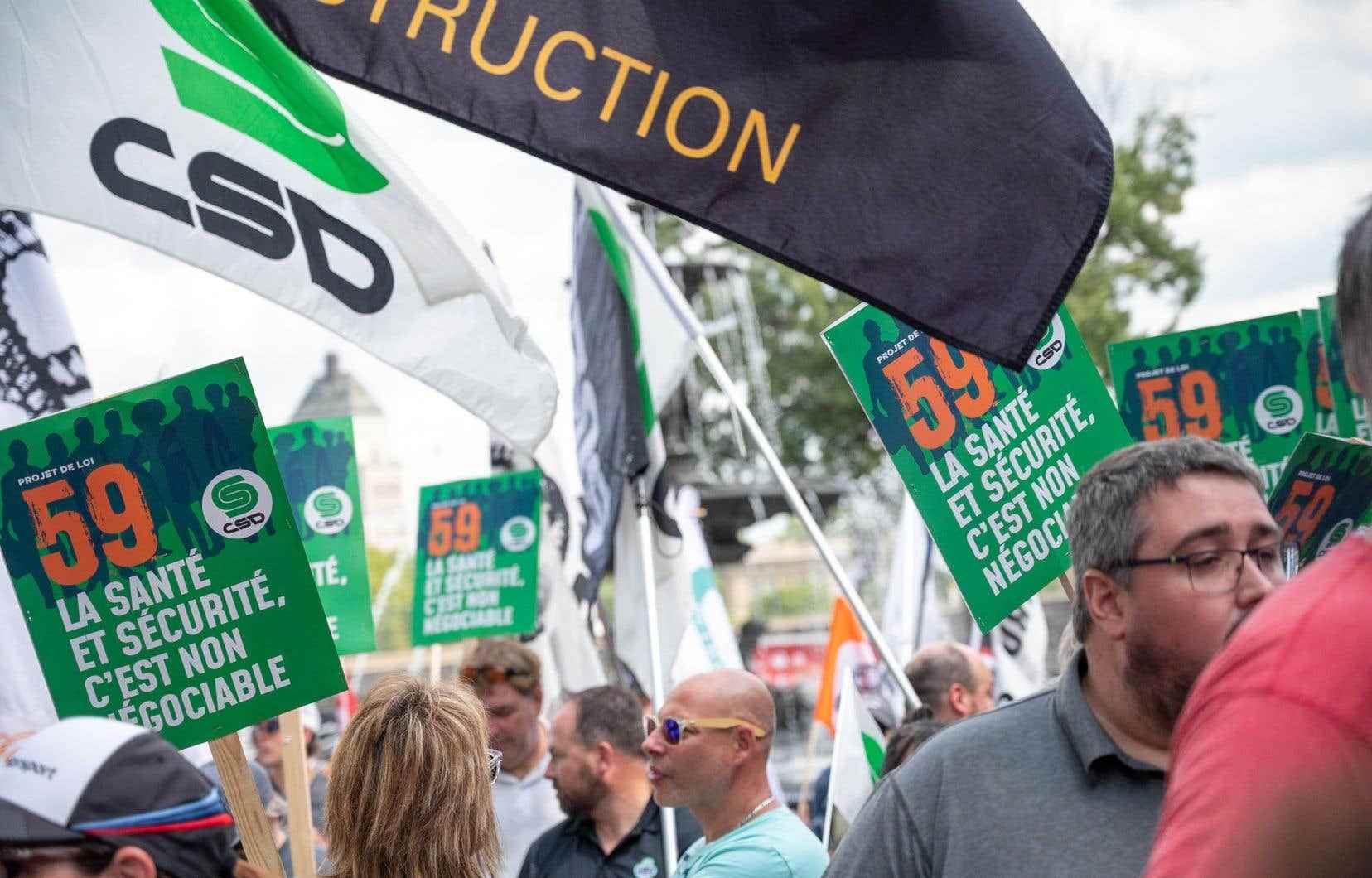This text is part of the special section The 50 years of the CSD
Some still believe that health and safety issues for workers, particularly those in the construction sector, are limited to wearing a helmet, or wearing a mask for the health worker. Don’t go repeating that to the senior leaders of the Central of Democratic Trade Unions (CSD). It is for them a perpetual struggle with multiple ramifications, a process of awareness that has been going on for decades and that is far from over. Even the adoption, last October, of the Act to modernize the occupational health and safety system — the previous one was more than 40 years old — did not calm all their concerns.
At the start of the pandemic, Quebec discovered that prevention was not its greatest strength…nor the biggest budget item within the government. Have we finally learned the lesson? Judging by the remarks of Luc Vachon and Kaven Bissonnette, respectively president and vice-president of the CSD, it is not new that it is necessary to convince public authorities and employers of its importance, too often perceived as a unnecessary expense rather than a profitable and responsible investment.
“In the 1990s, I was giving training for the CSD and I was already trying to get people to stop seeing the Commission for Fairness, Health and Safety Standards at Work as an insurance plan, either an organization responsible for compensation and rehabilitation. 85% of the money collected went there, and 15% went to prevention. In 2020, we are at the same proportions”, regrets Luc Vachon, proving that mentalities are sometimes hard, and slow, to change.
However, the demonstration has been made for a long time, according to Kaven Bissonnette. “When you invest $1 in prevention, you save $10 in compensation,” says the vice-president, also a lawyer.
Very real dangers
Even if zero risk does not exist, there is nothing to prevent certain worrying trends from being curbed. In 2021, 207 workers lost their lives, 71 of them in the construction sector alone. During the same year, 105,700 people suffered occupational injuries; and proof that no one escapes the mistakes of the past, there are 135 deaths caused by asbestos. This insulating material, widely used between 1930 and 1990, is still present in many residential buildings in Quebec. It is highly damaging when dispersed in the air during heavy work.
“Everyone is the same,” laments Luc Vachon. When you are young, in perfect health, illness is for others, until the day when… Not everyone goes through the rigorous safety process [quand vient le temps de retirer l’amiante], and I have heard stories of people working on Saturdays, in the dark, and without protection. »
Negligence or savings made on the backs of the most reckless, this phenomenon linked to asbestos – no longer on the media radar screen – illustrates some of the more complex facets of the construction world. We often say: “When the building goes, everything goes”, but is this really the case in the present post-pandemic context? Concerns are on the horizon as the machine starts to roll again at full speed, and perhaps a little too much for Luc Vachon’s taste.
“A slowdown or recession prompts governments to invest in concrete and asphalt. We are currently breaking a record in the number of hours worked, but to achieve everything, it takes 13,000 new workers per year, while the schools can only train between 2,000 and 3,000. Result: the presence of many young people and people who know nothing about the industry, who are without qualifications. This massive entry necessarily increases the level of risk. »
Not to mention that the rush to deliver projects within the prescribed deadlines sometimes imposes a hellish pace, with some preferring to cut prevention measures to achieve this.
Bad calculation, according to Kaven Bissonnette, especially when dramas arise. “Everyone suffers, especially the company whose reputation is damaged, struggling with a site that must close. »
Added to the labor shortage are other security issues, including those concerning foreign workers, an issue close to the Vice-President’s heart. “Faced with employees from Guatemala who speak neither French nor English, applying health and safety measures is quite a challenge. In the agri-food industry, their percentage is increasing, a reality that did not exist not so long ago. »
Like what it takes more than a helmet to protect yourself well.
